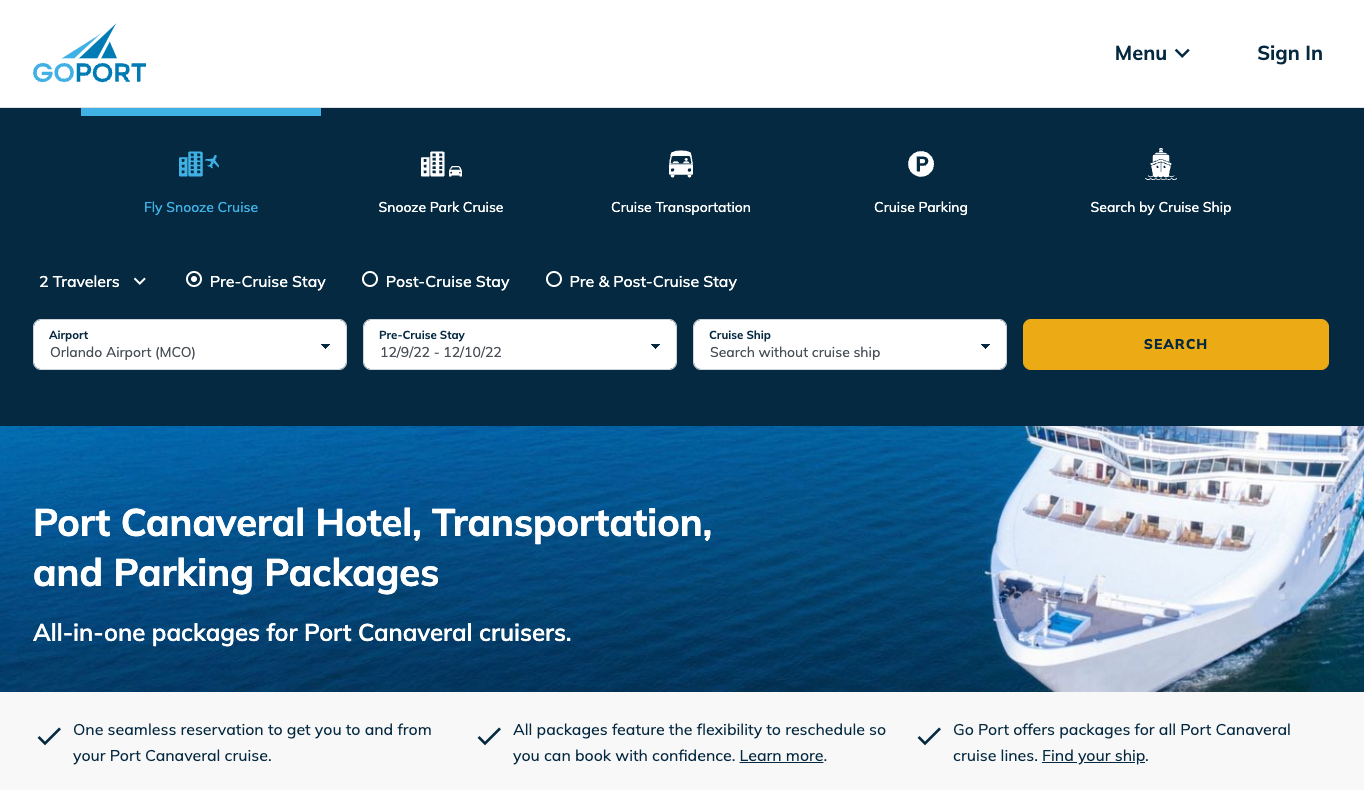You are reading Nuxt 2 docs. Head over nuxt.com for Nuxt 3 docs.
Curotec
Today we spoke with Curotec team members Brian Dainis, CEO, and Roberto Rielo, Team Lead Engineer, about their project: GoPort.
What is Curotec?
We're a US software development service agency specializing the Laravel, Vue and Nuxt ecosystems. Our team is made up of 80 people and includes many different profiles from full stack engineers to product managers, QA teams, UX teams and various folks in the management layer.
We specialize in custom development of websites, applications and e-commerce platforms. We pride ourselves on being a robust company capable of building enterprise-grade applications for a large variety of companies.
Furthermore, as a lot of our clients are SaaS businesses and already have in-house engineering teams, we are also capable of acting as a staff augmentation team and plugging right into their business.
Project: GoPort

Go Port is an e-commerce platform that facilitates transportation to and from the airport, various local hotels, and long-term parking facilities for Port Canaveral. Go Port is the “go-to” solution for cruisers booking travel arrangements ashore. By partnering with brand-name hotels and professional transportation providers, they offer simple, all-inclusive packages designed to complement any Port Canaveral cruise. The application was designed with five main goals: scalability, sleekness, intuitive design, usability and security.
Why did you choose Nuxt as your frontend framework?
We have learned that using VueJS and its ecosystem on its own, in a standard way, can be complicated and time-consuming. Building applications that are scalable and easy to maintain is becoming more and more complicated every day.
Maintaining project structure, organizing state management, exposing dependencies, and configuring the routing system can be some of the most complex and challenging aspects. So, having a tool like Nuxt that helps us handle all these tasks efficiently allows us to focus on building unique features rather than reinventing the wheel.
Are you using dynamic or static rendering? Why?
We use both dynamic and static rendering. We take advantage of dynamic rendering when building the frontend application, given that heavy traffic and many concurrent visitors are expected. We needed to improve our users' experience with faster page rendering, leading to a great SEO experience. On the other hand, we use static rendering for the internal admin panel given that only a few users are accessing this area; therefore, performance was not so critical for this section.
What is your favorite feature?
We have 3 main features that we like.
The first one is Meta Tags and SEO: this feature played a great role in our application, given that we needed to optimize specific pages of our website to gain better search engine results.
Data Fetching is also a great feature, it is incredibly powerful to use Nuxt-specific hooks (asyncData and fetch) to render data during server-side rendering. Also, having access to the fetch state makes it easier to implement loading/skeleton placeholders while different page sections are loading, increasing the user experience.
Last but not least, the File System Routing: using the folder structure to generate the router configuration automatically helps to save a lot of time during development, especially when you have to maintain many routes with parameters pointing to different components.
What are the features that you are waiting for?
To be honest, everything that I was waiting for has already been released with the latest release candidates. I was really impressed with Nitro and I also really like the new state management system and the use of composition API.
Would you recommend Nuxt?
Yes, absolutely! Every company seeking development speed, code quality, and great application performance should consider using Nuxt.